https://www.youtube.com/watch?v=7NW1BxPuwAk
Roomba i7+ Review - 6 Months Later
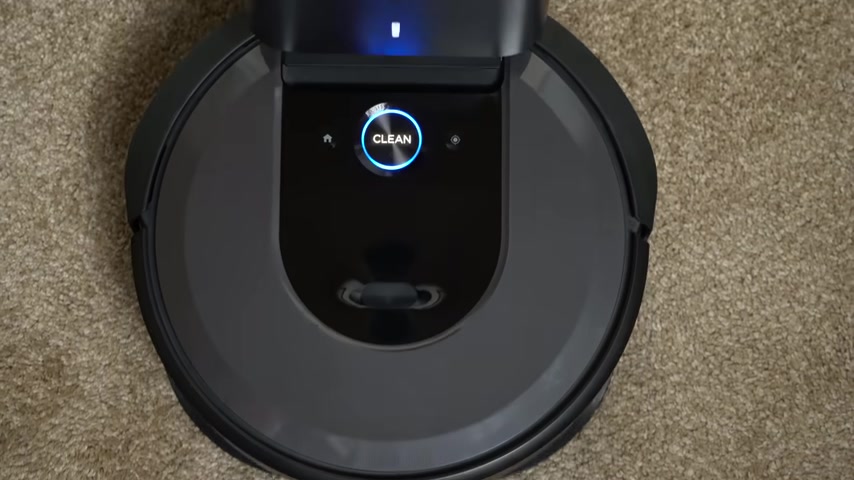
The Roomba I seven plus robotic vacuum cleaner from Irobot is what robotic vacuum cleaning should be a completely automated experience by having a dust bin integrated into the charging base for the robotic vacuum .
The I seven plus is unlike most robotic vacuum cleaners on the market today because it empties itself and delivers on the promise of an automated vacuuming experience .
We've been testing our Roomba I seven plus robotic vacuum cleaner for the past six months now .
So it's time to dive in to some of the main features of this system , the maintenance and reliability , some of the downsides .
And then ultimately , if we recommend getting this system .
Now , first , let's take a look at some of the main features of the device .
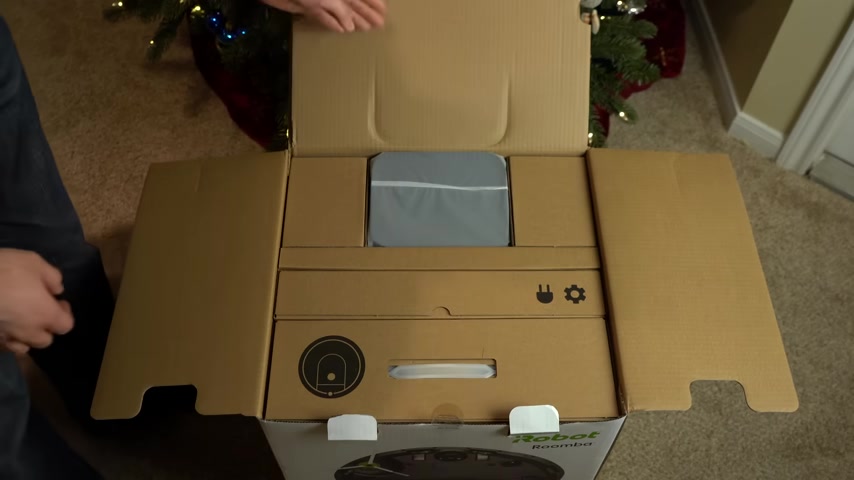
The Roomba I seven plus system has three main parts , the robotic vacuum cleaner itself , the clean base and then the main way you set up and control the system , which is through the Irobot app that you can download from the Google Play Store for Android Devices and the App Store for I OS Devices .
When I first opened up our system , I was quite impressed with the packaging .
It's really easy to assemble .
And honestly , I thought it was going to be a little bit more involved inside the box .
You get the vacuum robot , the clean base two dirt disposal bags , a cord for the clean base one extra high efficiency filter , an extra side brush and a dual mode virtual wall unit .
The vacuum itself looks pretty sleek with its glossy and matte black Composer .
The robot has three main capacitive touch buttons on top one to send it home , one to start cleaning your home and another for spot cleaning .
There is an led ring around the clean button that will glow different colors and in different patterns .
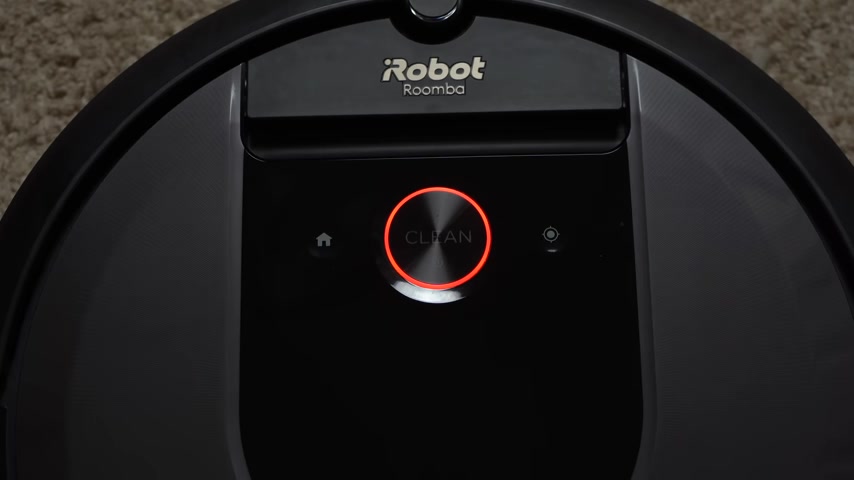
Depending on the situation , it will pulse white when charging on the base , it'll glow blue to indicate that it's returning to its base and red to indicate that the battery is low and it will need to go back to the base to charge looking around the robot .
You'll see other sensors like the camera in the middle , which helps your robot navigate your home by having a camera based system .
Though , this does mean that your Roomba is not going to operate well in the dark towards the front of the Roomba , you'll see the light touch sensor that the robot uses for object detection and the ACON sensor up at the top , which helps the robot communicate with the clean base .
The clean base also looks sleek with a modern aesthetic and was a bit smaller than I expected it's only 19 inches or 48 centimeters tall and one ft or 30 centimeters wide .
It also houses an I R window which helps the robot line up correctly with the base .
And in my experience , I've had no issues with the robot coming back to its base correctly .
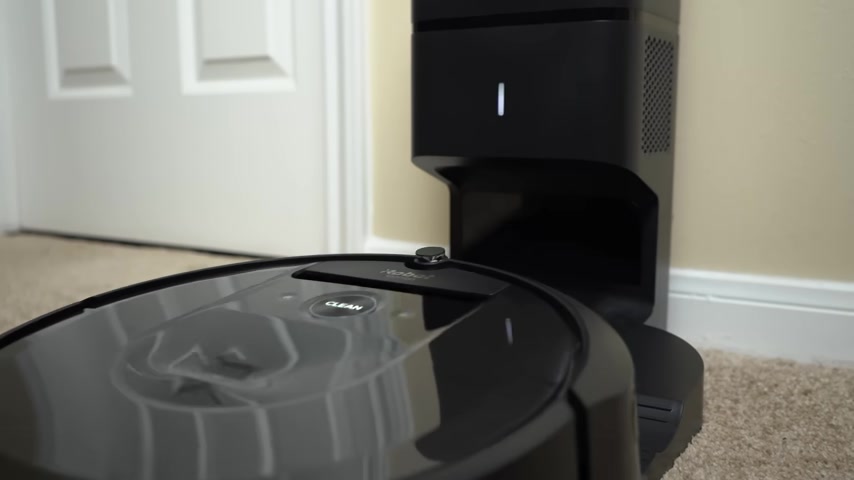
The clean base also has a single led status light that will turn different colors and blink different patterns for different situations .
It'll turn red when the bag is full or missing from the clean base , or it'll blink red if there is a clog and it'll pulse white when the clean base begins to charge the robot from the charging contacts on the front of the system at the top of the clean base , you'll find the canister lid , which when you lift it up , you'll see the bag .
This system uses a more traditional vacuum bag system versus a canister system like you'll find on a Dyson in the six months of owning the system , we've had to replace the bag in the clean base only once and that was after four months of use .
And keep in mind that we typically run the vacuum twice a week in our 1200 square foot apartment .
So with all that in mind , I actually thought the bag change frequency is actually really good .
Moving on next , let's talk , set up and right off the bat .
It's pretty simple .
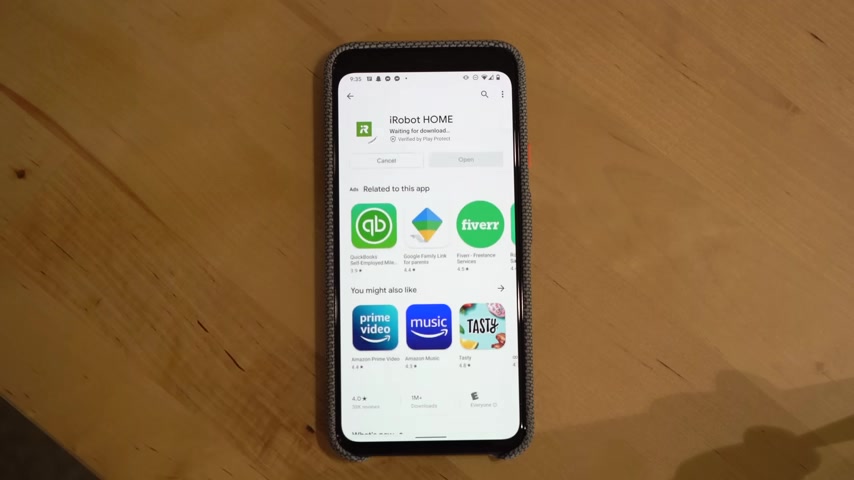
You'll first need to decide where to place your robot and clean base .
And when you do , you'll need to make sure that it's in an area of your floor plan that has at least 1.5 ft or 0.5 m of clear space on both sides of the clean base and four ft or 1.2 m of free space in front of the base and away from stairs .
After that , the rest of the setup is done in the app , which is pretty standard for tech products nowadays .
But I have to say that this experience was really well polished RBA even threw in some cute little robotic animations .
And I love that you can give your robot a name .
Telling the Google assistant to send Bati to the kitchen is just way more fun .
And yes , I did name my robot Bati because why not ?
Now , the last thing you want to do before sending your robot out on its first vacuum run is completing what's called a training run .
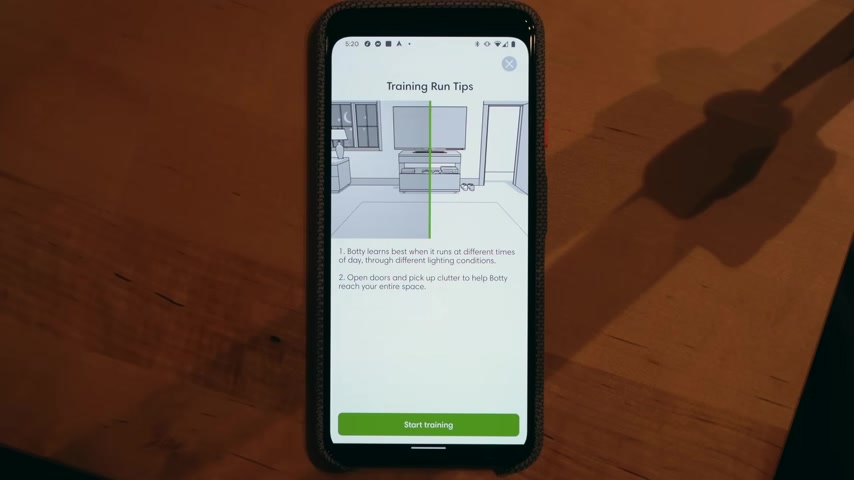
This sends your Roomba out into your home to learn the layout of your home and create a smart map , but it doesn't actually vacuum while doing this saving its battery so it can more quickly map your floor plan .
The smart map will be displayed in the Irobot app where you'll be able to create room dividers between rooms , name those rooms and also add keep out zones which are really useful , especially for temporary decorations like a Christmas tree .
The Roomba I seven plus system also comes with a dual mode , virtual wall barrier that you can place in your home to keep the robot out of places .
You don't want it to clean .
There's a switch on the wall barrier where you can either place it in a virtual wall mode where it will keep the Roomba out of a room or a halo mode , which will create a circular barrier that will extend approximately 24 inches or 60 centimeters on the device that the Roomba will stay away from smart maps are also really important .
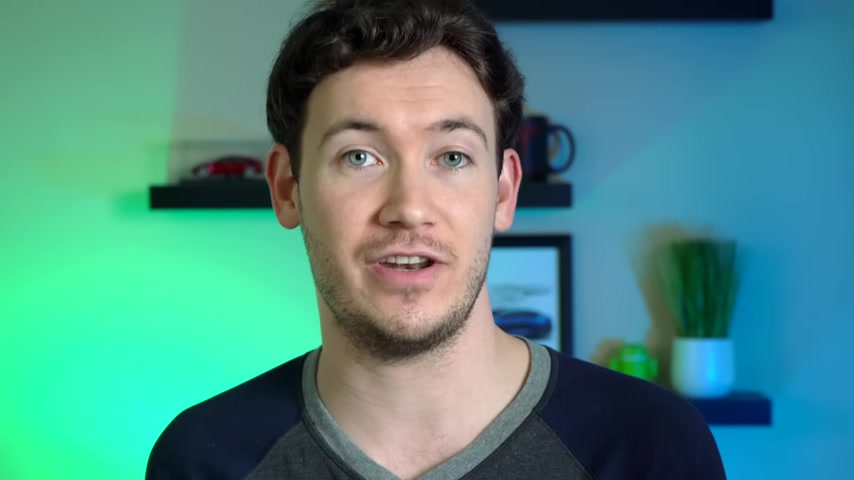
If you want to take full advantage of the Google assistant and Amazon assistant integrations with your Roomba robotic vacuum cleaner .
For example , you can tell your Roomba to clean a specific room .
Like I often tell Bati to go clean the kitchen after I finished up making dinner .
Now to start vacuuming , you can either hit the clean button on the Roomba which will start a cleaning cycle or you can hit clean on the Roomba app and you'll be presented with two options , clean all rooms or choose rooms .
This is another benefit of the smart mapping technology .
If one of your rooms is just a complete disaster right now , you could just tell the robot to skip it .
You also have the option to create a schedule and you can customize it so your Roomba can clean different rooms in your home on different days , which is pretty neat .
Once the Roomba is done cleaning .
You'll get a notification that it's completed its job and it will show you a map of the areas that it cleaned in your home and where it detect more dirt than usual .
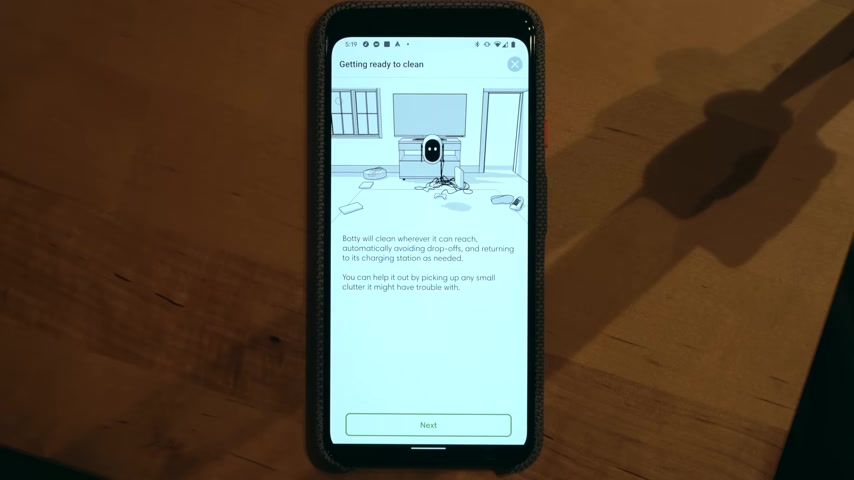
Now , when cleaning , you'll see your Roomba do some pretty impressive stuff .
It'll navigate your rooms creating visual landmarks to keep track of where it's been and where it has yet to clean .
You'll have to make sure that your home is picked up before it starts its vacuuming run .
Irobot recommends removing things like socks , toys and cords from your floors before sending your Roomba out .
If you have pets , the Roomba has a filter that should keep that pet hair in check the special material that the filter is made out of can capture 99% of mold , pollen , dust , mites , and dog and cat allergens .
The robot also utilizes its dual brushes that help it keep constant contact with your floor as it traverses your home and seamlessly transitions between a hard floor to carpet to a rug .
In the six months we've had our room , but I've been quite impressed how well it transitions from cleaning things like my bathroom floor to the rugs in my bathroom .
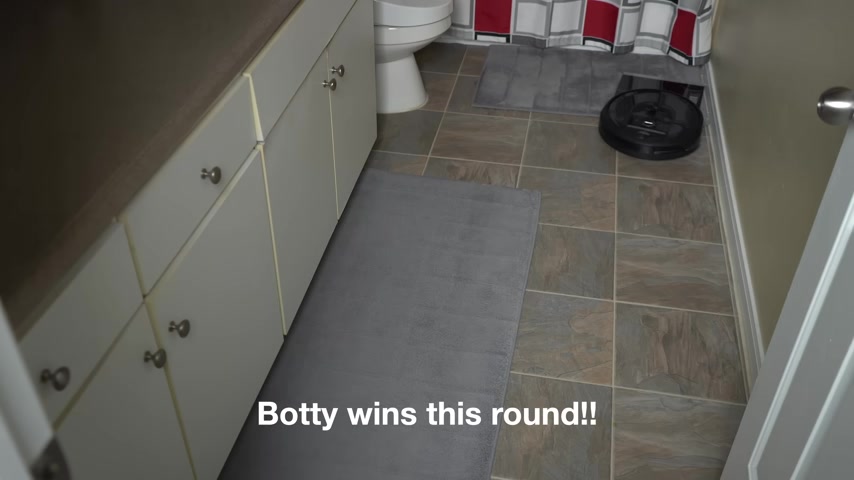
Now , I haven't run into many issues with the Roomba while it's on its vacuuming runs .
There's only maybe a handful of times where it's truly gotten stuck on something or stuck somewhere that it just can't get out of and typically those are my fault because I left some big object in the room that I forgot about that the Roomba just ran over or I accidentally shut the Roomba in a room , not realizing it was in there .
Still vacuuming .
Sorry , Bodie in general though , uh the Roomba , even when it runs over , things like cords and stuff , typically , it actually that has ran over something and it'll try to kind of wiggle out of it .
And typically it is able to do that .
If your Roomba gets stuck , you'll get an alert on your phone , letting you know that your Roomba is stuck and you'll be able to see where in your home , the Roomba got stuck , which is a nice touch in terms of the quality of its cleaning job .
Overall , I've been quite impressed the first month that I had the Roomba , I decided to use it exclusively as the device I was going to use to vacuum my home .
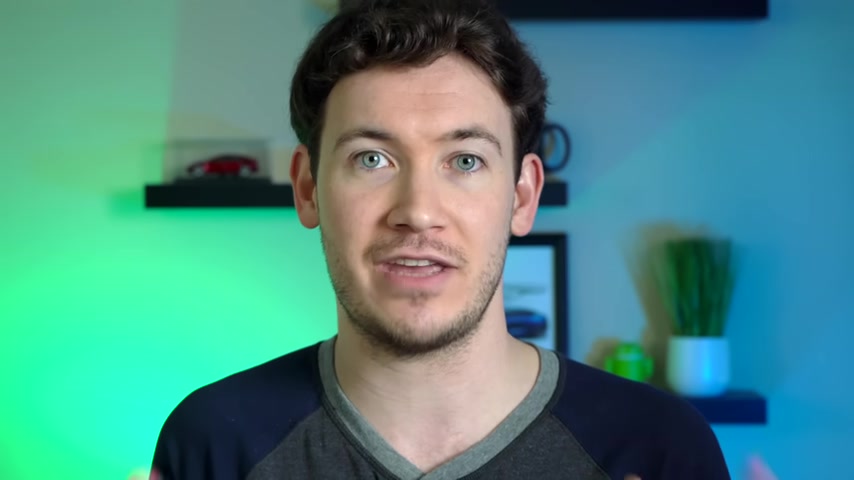
After a month , I went over for all of the areas that the Roomba had been cleaning with my Dyson expecting that the Dyson would not only pick up the normal amount of dust .
It usually does week after week when I use that device as my main vacuuming device , I was actually expecting it to pick up more dust .
But to my surprise , the Dyson barely picked up any dust at all in my home , like barely enough to even justify emptying the canister out into the trash bin .
So overall , I've been quite impressed with the rba's cleaning capabilities .
It actually seems to pick up much more dust than I even thought it would .
Now , I have noticed that it doesn't clean hard floors quite as well as it cleans carpet in my kitchen .
It's spinning side brush will occasionally scatter debris to another area of the floor that the room , but just can't quite reach to like under the kitchen cabinets .
So I'll still need to use my Dyson's hose attachments for those types of situations .
One other thing that you may notice while vacuuming with this robot is the noise that it makes .
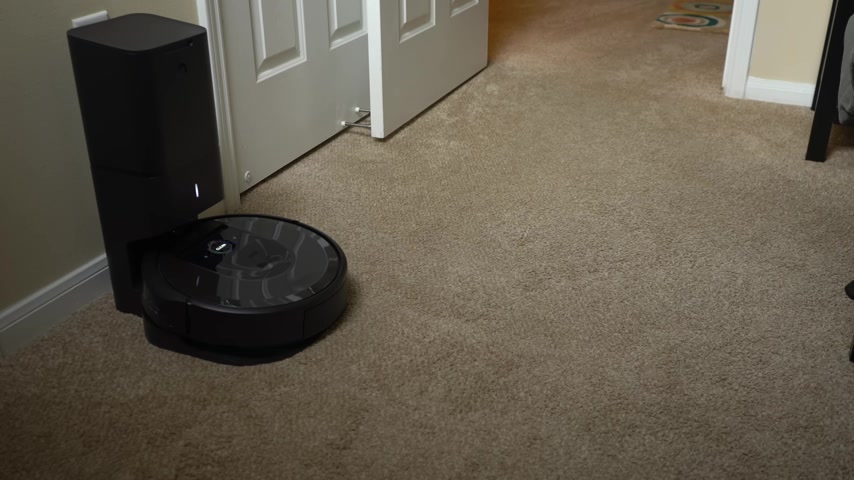
If you've never had a robotic vacuum cleaner or Roomba before they make quite a bit less noise than your typical vacuum cleaner .
The I seven seems to be right around 65 to 66 decibels when it's right next to you .
The loudest part of the experience is when the robot returns to its clean base and dust is sucked out of it .
That noise level is about the same as my Dyson and around 75 to 80 decibels up close .
Now , while the Roomba provides a pretty automated vacuuming experience , that doesn't mean that there isn't any maintenance that you're going to have to do with this system .
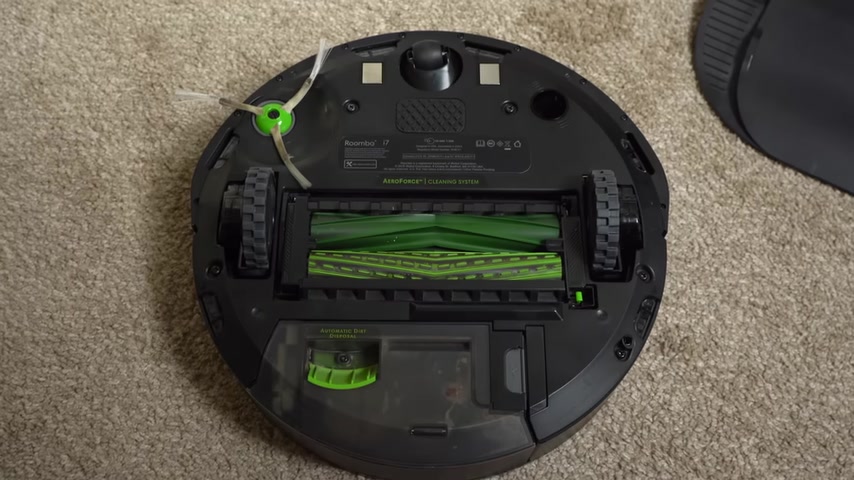
You'll periodically have to clean the robot and the clean base's exterior , remove the robot's dust bin and rinse it out , replace the filter every two months and clean the multi surface brushes as well as the front caster wheel and edge sweeping brush , which are meant to be replaced every year .
It's important to do these things to make sure that your vacuum will operate properly .
Otherwise you may run into situations like we did where our vacuum started squeaking .
Once we cleaned the robot , we didn't experience it again .
Now , let's talk about some of the downsides that we've experienced with our Roomba I seven plus robotic vacuum cleaner .
First up , the design of the Roomba allows the front get pretty scratched up .
If you have white base boards or other painted elements near your floor that the robot will run into over time .
I wish there was an easier way to clean the marks off of the robot , maybe like a plastic protection barrier or something that you can replace every once in a while .
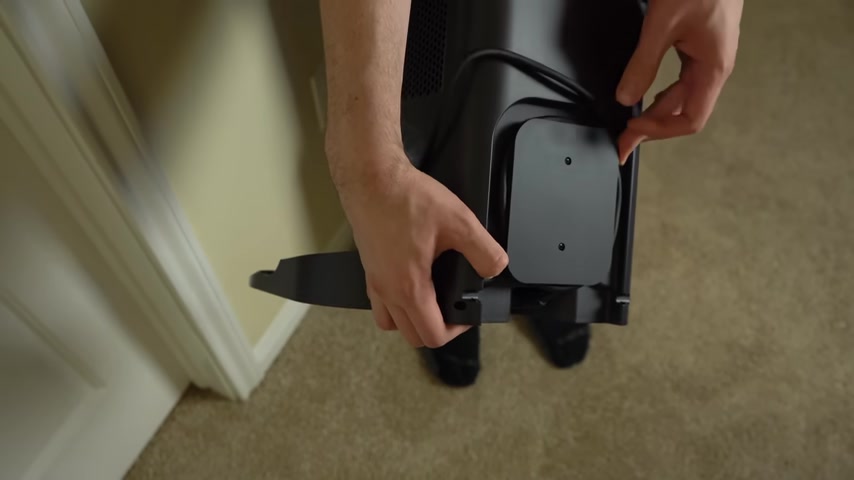
I don't know , but just something there so that these marks don't go directly onto the plastic piece of the robot .
Another downside is while the clean base does have a nice cord organization feature in the back of it .
There's not a great way to make it flush against the wall with the way the cord sticks out of an outlet .
Another downside as I mentioned before is the hard floor performance .
It just isn't as good in my experience as the carpet cleaning performance is the last downside is that you have to remember when to perform certain maintenance tasks with this system .
To me , this is something that the Irobot app should actually proactively remind you to do .
Like especially during COVID-19 weeks are turning into months here .
I don't know what day it is today .
Like , I'm just not gonna remember when to perform certain maintenance tasks with this system .
To me , that should be something that the app can proactively remind you to do .

Anyways in wrapping up my thoughts with this system after using the Roomba I seven plus for over six months .
Now , do I recommend getting this device ?
Yes , mainly because of the significant impact this device will have on your life and your cleaning habits .
It's like having a housekeeper vacuum your home whenever you want .
I find that I clean my floors more with the Roomba than I normally would with my Dyson .
I just love seeing the lines it makes in the carpet and rugs and because this system is so automated , it gives me a good chunk of my free time back every month that I now don't have to spend on vacuuming .
Now with a price of $799 here in the US .
It certainly is not inexpensive , but for what it does the time back that it gives you and improvement to the cleanliness in your home .
To me , the experience has been well worth that price .
If you're interested in learning more about the Roomba I Seven plus or want to purchase the device for yourself .
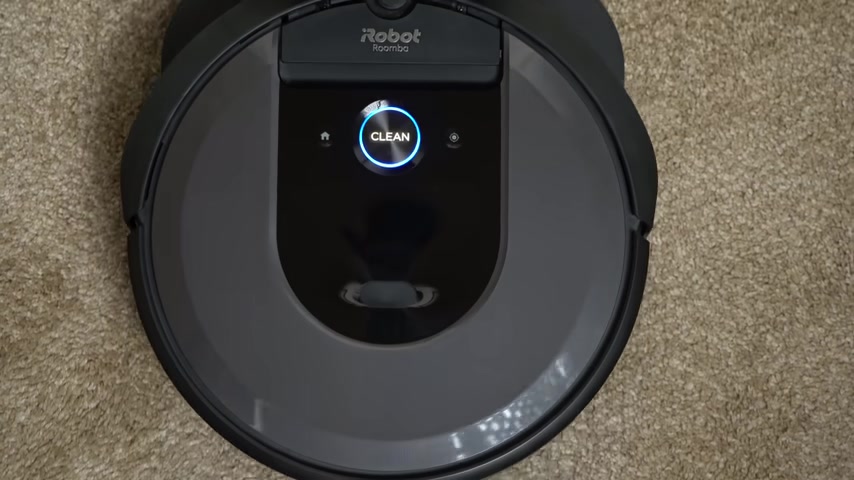
Check out the link in the video description below .
Well , that'll do it for our review of the Roomba I seven plus robotic vacuum cleaner .
If you like this video and found it helpful , make sure you hit that thumbs up button below and subscribe to the channel to see more long term product review videos like this one for six months later .
I'm Josh Teter .
Thanks for watching .
Are you looking for a way to reach a wider audience and get more views on your videos?
Our innovative video to text transcribing service can help you do just that.
We provide accurate transcriptions of your videos along with visual content that will help you attract new viewers and keep them engaged. Plus, our data analytics and ad campaign tools can help you monetize your content and maximize your revenue.
Let's partner up and take your video content to the next level!
Contact us today to learn more.